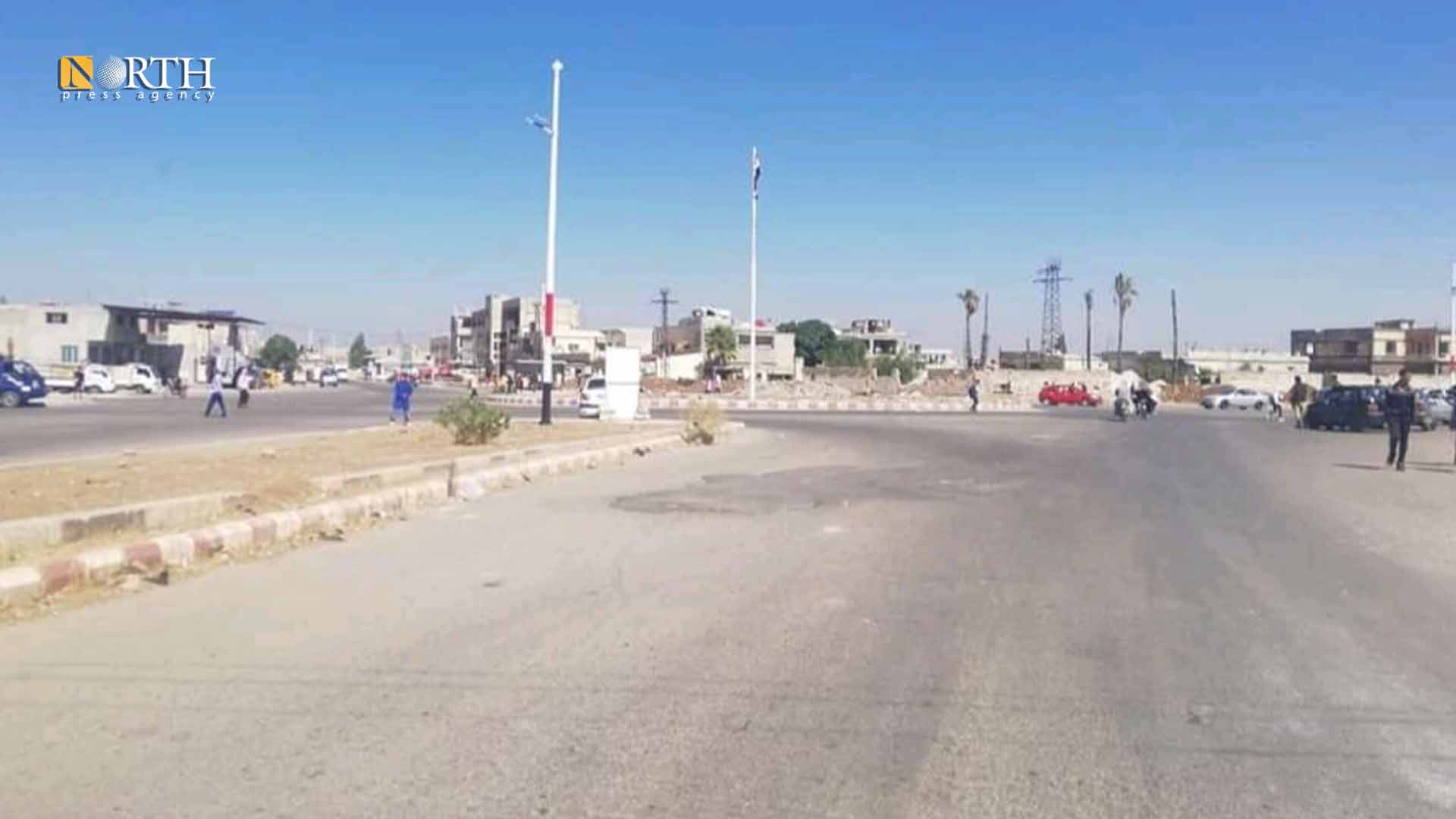DARAA, Syria (North Press) – Since the beginning of this week, security services of the Syrian government forces have withdrawn from their military checkpoints in villages and towns in Daraa governorate in southern Syria, to redeploy according to new maps of influence for each of them.
The Air Force Intelligence evacuated a security point and three military checkpoints at the entrances to the towns of al-Sheikh Meskin and Nawa in the western countryside of Daraa, without bringing in other members, local sources told North Press.
The Air Force Intelligence members withdrew from the Tesil municipality council in the western countryside of Daraa on November 5, to be replaced by members of the Military Intelligence Division, the sources added.
The same sources pointed that on November 6, the Air Force Intelligence set up a military checkpoint in the town of al-Sahwah in the eastern countryside of Daraa, after the withdrawal of a checkpoint belonging to the Military Intelligence Division a few days ago.
Nassib border crossing under the eye of Russia
The government forces evacuated members of the Air Force Intelligence Division from the Nassib border crossing with Jordan, bringing the crossing completely under the control of the Military Intelligence Division.
A former leader of the Syrian opposition factions told North Press that the exchange of roles between the security branches was a Russian order.
He added that the withdrawal of Air Force Intelligence personnel from Nassib border crossing was at a Jordanian request from Russia, due to the dependence of the Air Force Intelligence Division on Iran.
Syrian-Jordanian Nassib border crossing is now under the control of the Military Intelligence Division, especially the group of Imad Abu Zureiq, a former leader in the Syrian opposition.
Thus, the Damascus-Amman Highway from Damascus to the Nassib border crossing is under the control of the Military Intelligence Division.
The former leader considered that Abu Zureiq, who returned from Jordan in mid-2019, is the best option for Jordan, given their previous knowledge of him during the Syrian opposition’s control over southern Syria.
Role-playing
One of the notables of Daraa governorate told North Press that the sharing of influence between the security branches in the post-settlement phase leads to the stationing of Military Intelligence at Nassib border crossing along the Damascus-Amman Highway known as the M-5 road.
He added that the western countryside of Daraa will be under the control of the Military Intelligence Division, while the northern countryside will be under the control of the State Security Branch.
He pointed out that the Air Force Intelligence Division will deploy its checkpoints and security points in the eastern countryside of Daraa, with the exception of the town of Busra al-Sham and a number of surrounding villages.
Busra al-Sham in the eastern countryside of Daraa is considered the main stronghold of the Eighth Brigade, whose subordination was transferred months ago to the Military Intelligence Division.
Terms of agreement 2018
Muhammad al-Zou’bi (pseudonym), a human rights activist in Daraa, denied that the withdrawal of government forces’ checkpoints from Daraa governorate to be honored by the head of the Syrian regime as portrayed by the official media.
He said this withdrawal had been agreed upon since July 2018, during meetings sponsored by Russia in the town of Busra al-Sham in the eastern countryside of Daraa between leaders of the Syrian opposition factions and representatives of government forces.
The settlement agreement in 2018 included a clause requiring the withdrawal of military checkpoints from the villages and towns of Daraa governorate and their return to their military units as they were before the spring of 2011.
However, this clause was previously applied on some areas that Russia was constantly entering, such as Busra al-Sham, Daraa al-Balad and Tafas, according to the activist.
Al-Zou’bi indicated that the withdrawal of government forces is taking place gradually and in batches towards the city of Suwayda, with the aim of putting pressure on the people of Suwayda governorate, who protested from time to time against the Syrian government.
These forces had originally come from the headquarters of the Division 15 in the countryside of Suwayda, which participated in battles in various Syrian regions during the war.

